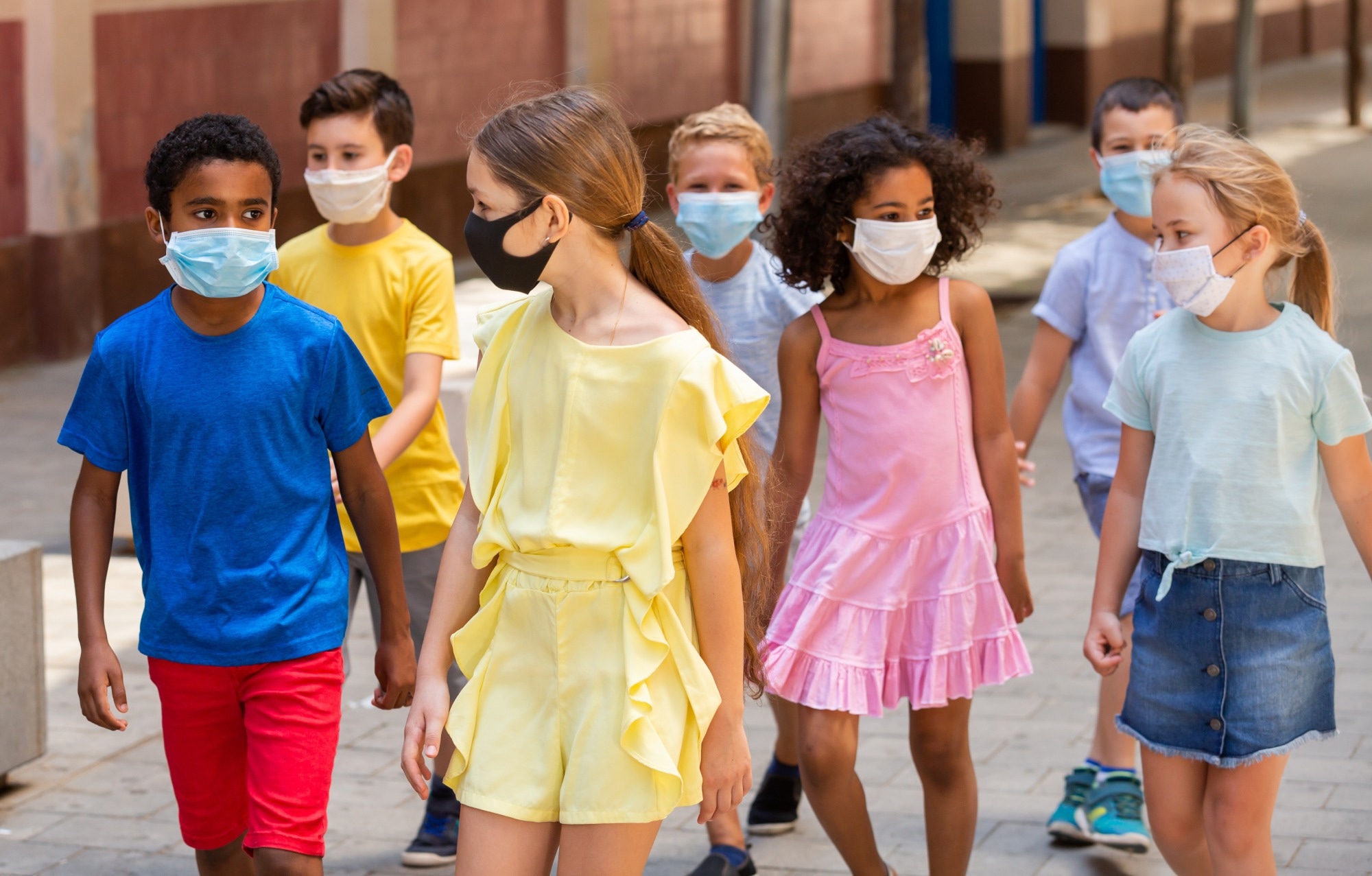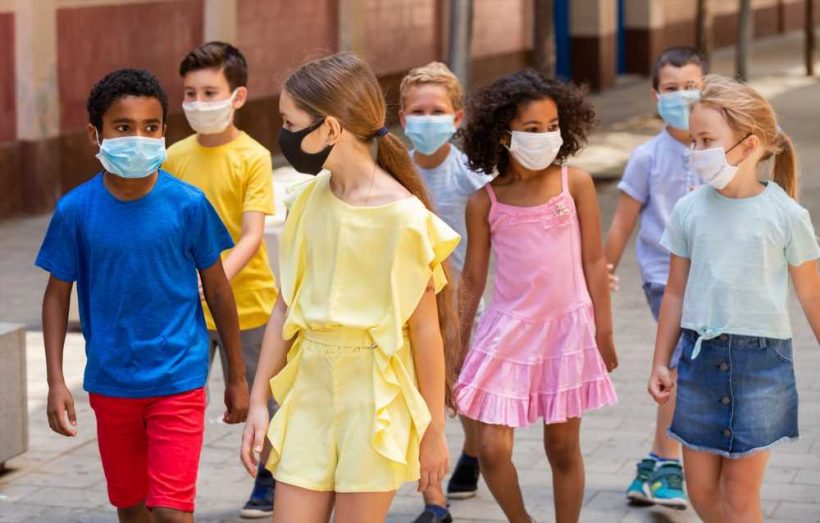In a recent study published in Environmental Research, researchers investigated whether surgical and N95 face masks cause respiratory distress in children.

Background
In a recent article published by Walach et al., they stated that the use of face masks in children raised the carbon dioxide (CO2) amount in inhaled air so quickly to a high level that even in resting conditions it would carry serious health risks. The authors of the current work pointed out several methodological limitations of the Walach et al. study so that the parents might not consider masking harmful and dangerous for their children.
Walach et al. considered 2000 parts per million (ppm) CO2 levels as the cut-off value of CO2 toxicity. This value applies to indoor air quality, whereas the environment created between the face and mask is not comparable to an enclosed environment. Also, as per the United States Centers for Disease Control and Prevention (CDC) website, exposure to about 50,000 ppm CO2 for 30 minutes causes the first symptoms related to respiratory distress. Walach et al. reported CO2 levels between 13,120 and 13,910 ppm, which are well below the threshold for CO2 toxicity.
Second, Walach et al. study could not prove the alleged link to hypercapnia because they failed to measure blood CO2 levels. The main physiological compensation mechanism for hypercapnia is increased respiratory and heart rates. The study subjects showed no such symptoms, and they did not show decreased oxygen saturation (SaO2). Lastly, the measuring device used by Walach et al. in their study could not adapt to the rate of CO2 changes, hence, yielded unreliable results.
About the study
In the present study, researchers assessed respiratory distress in children using multiple parameters, including partial pressure of end-tidal carbon dioxide (PETCO2), heart rate, respiratory rate, and clinical signs. They monitored the changes in respiratory parameters in all the study subjects every 15 minutes. For the first 30 minutes, these children were not wearing a face mask, but they were asked to wear a face mask later. The masked sessions consisted of a 12-minutes walking test in a 40-m long corridor.
Results and conclusion
During rest and physical activity, the use of a surgical mask did not cause any significant changes in the respiratory parameters of the children. The use of the N95 mask, particularly during physical activity, increased PETCO2, but it remained in the normal range. Overall, none of the children evaluated in the current study showed any clinical signs of respiratory distress throughout the duration. In support of these findings, another recent study in adults with severe lung impairment showed that surgical masks did not influence their gas exchange capabilities.
Moreover, several studies have shown the effectiveness and accuracy of methods involving the evaluation of PETCO2 to show changes in respiratory distress parameters, including venous pCO2 and arterial pCO2. The implications of mask use in pediatric age require careful consideration because it is the only non-pharmaceutical intervention measure that could reduce the spread of severe acute respiratory syndrome coronavirus 2 (SARS-CoV-2). Moreover, it could help contain many common pediatric diseases, which, in turn, could reduce healthcare system expenses.
Most importantly, there is enough clinical evidence supporting the safety of masks in the pediatric age. Thus, parents should not doubt that mask use is hazardous for their children or increases carbon dioxide in the inhaled air. In fact, it prevents the spread of multiple pathogenic infections, including SARS-CoV-2, for the good of public health.
- Riccardo Lubrano, Alessia Marcellino, Vanessa Martucci, Mariateresa Sanseviero, Silvia Bloise. (2022). Respiratory function in children wearing face masks. Environmental Research. doi: https://doi.org/10.1016/j.envres.2022.114415 https://www.sciencedirect.com/science/article/abs/pii/S001393512201742X
Posted in: Child Health News | Medical Science News | Medical Research News | Disease/Infection News
Tags: Blood, Children, Coronavirus, Healthcare, Heart, Heart Rate, Oxygen, Physical Activity, Public Health, Research, Respiratory, SARS, SARS-CoV-2, Severe Acute Respiratory, Severe Acute Respiratory Syndrome, Syndrome, Walking

Written by
Neha Mathur
Neha is a digital marketing professional based in Gurugram, India. She has a Master’s degree from the University of Rajasthan with a specialization in Biotechnology in 2008. She has experience in pre-clinical research as part of her research project in The Department of Toxicology at the prestigious Central Drug Research Institute (CDRI), Lucknow, India. She also holds a certification in C++ programming.
Source: Read Full Article
